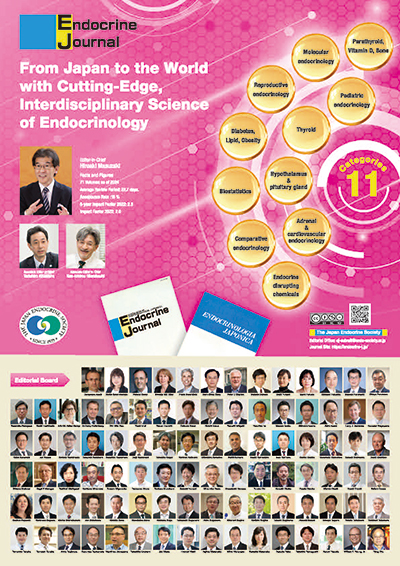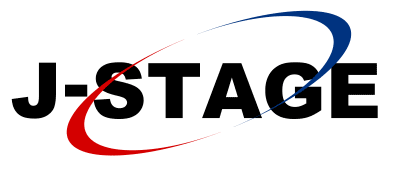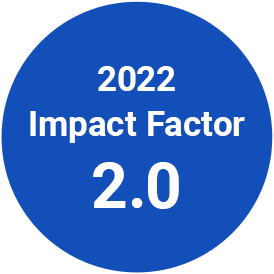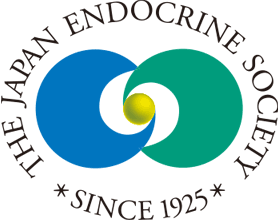For the sake of your well-being, how can you effectively and repeatedly communicate the wisdom of “exercise” to the general public so that their questions are intelligently and correctly answered? Have you ever given them a certain, if somewhat substandard, message such as 1) exercise-mimicking drugs aren’t appealing, 2) very-low carbohydrate foods are superior to other special diets ± exercise, 3) it doesn’t matter that endurance (aerobic) exercise is far superior to resistance (anaerobic) exercise, or vice versa?
Some may be the one and only solution for them, but some may not be effective or even harmful for others. Therefore, your correct response is, as expected, “Your question itself is very important, but the answer depends on each and every one of you.
First, they need to properly organize and clarify the purpose of their inquiry: 1) Do you want to get cosmetically skinny or a less obese body style? 2) Do you need to improve your metabolic condition before you get sick, in other words, is it preventive? 3) Is the goal to cure the most serious diseases that result from a sedentary lifestyle, and/or to ameliorate associated diseases? 4) Is your aim improvement of future drug efficacy in preparation for modifying the intracellular signaling system for dietary nutrients and the extracellular milieu?
Unlike other communicable diseases, even if oral medications and/or injections are once successful in controlling or normalizing these metabolic diseases, we do not have the weapons to get rid of them. In other words, our diseases that appear to be polygenic are accompanied by a kind of treatment resistance. This is because it is not possible to correct all possible genetic and epigenetic etiologies. In fact, postponing or reducing medication is a legitimate practice that is already routinely done. Nevertheless, in addition to these drugs, or along with them, there are strict non-pharmaceutical daily restrictions on the metabolic diseases that must be followed even by patients in the 21st century, just as they were in the days when the Greeks and Romans enjoyed their happy and creative eras.
Here, Ogawa’s group thoroughly examined whether exercise intensity synergizes with the glucose co-transporter 2 inhibitor (SGLT2-i) dapagliflozin in patients with T2DM. In their RCT, 146 patients were assigned to a 24-week treatment of intensive exercise. The primary endpoint was the change in body fat distribution in each patient. Their study revealed that intensive exercise did not influence reduced fat-free mass after administration of SGLT2-i while it was able to further decrease abdominal fat, hopefully leading to greater improvements of hyperglycemia and chronic inflammation than DAPA alone in T2DM patients. It is important to emphasize that the mechanisms of action of SGLT2-i and exercise overlap, and in both cases energy production is biased toward the utilization of fat rather than glucose or glycogen. It is easy to imagine that this condition is similar to the condition of very low carbohydrate diets to treat obesity leading to T2DM. In the latter case, the recent emphasis on frailty due to lack of body protein and the many adverse reactions due to excessive lipid intake (with the exception of some ketogenic diets) is rather contrary to the benefits of reducing carbohydrates to prevent or treat T2DM.
Similar experiments have been conducted previously by others, but their conclusions were not uniform. Through somewhat different approach, one report proposed that inhibition of SGLT2 makes the improvement in insulin sensitivity by endurance exercise training uncertain, independent of the effects of aerobic exercise on fitness and body composition. Insight into such discrepancies in the quality and quantity of exercise must be of great significance, but it will be necessary to watch for the unprecedented occurrence of adverse clinical outcomes, even if they are rare.
It is increasingly realized that miscellaneous types and degrees of liver dysfunction occur during/after PTU (propylthiouracil, one of the two thionamide drugs currently used in the routine clinical settings shown here) administration against Graves’ disease. Recently, these events are recognized as common adverse effects of PTU in addition to a well-known intractable sequelae such as ANCA (anti-neutrophil cytoplasmic antibody)-related vasculitis including impressive otitis media shown in the recent issue of EJ (1) or notorious agranulocytosis. Indeed, before such a high frequency of liver toxicity triggered by PTU is advocated, it has been widely believed that PTU is less toxic and more safely prescribed even after permitting its a little weaker potency compared with the anti-thyroid activity elicited by MMI (methimazole, another thionamide of a potential first choice in Graves’ drug therapy). However, we must seriously recall that both drugs occupied its current standard position only after serendipitous successful experience; both were originally developed as bactericidal weapons before fortuitously confirming the remarkable anti-thyroidal activity of their derivatives. As a matter of fact, we kept appreciating PTU’s precious values for their anti-Graves’ efficacy for a long time because it did not bring about frequent serious adverse effects. Nonetheless, it is nowadays recognized as risky as MMI when we use PTU in early pregnancy (cf. inborn somatic anomalies) or probably even in the breast-feeding period, while both of these occasions have long been indicated to be the first and specific situations for the choice of PTU, but not MMI, to treat accompanying Graves’ morbidity more safely.
Some solid lines of evidence indicate that PTU (and MMI) is a potent immunomodulator or regulator of proinflammatory cytokines to cure Graves’ disease, but its effect and the difference between the two thionamides are still unpredictable. No systemic translational biology using these thionamides from such a viewpoint has been reported since that time, however. No direct target to be considered a possible biomarker for eradicating the disease morbidity has been postulated or discovered. In addition, no competitions or incentives developed brand-new Graves’-curing agents during these 2 to 3 decades with some exceptions. For example, prednisolone is never warranted among them chiefly due to its inability to aim at the thyroid-specific autoimmunity. Then, now is the time to break various ambiguities for which physicians had been combating for a long time without durable success and with a certain number of therapeutic failures. Not only avoiding serious troubles but also truly developing efficacious and safe medication, as-yet unknown biomarkers will certainly conquer Graves’ disease with a much better outcome after introduction of such drugs in the clinical field.
Together, our use of PTU, even in the usual ambulatory occasion in the absence of pregnancy or coexisting disease morbidity, is more and more restricted as shown above. Next-generation anti-thyroid strategy especially exploiting the deep insight into autoimmunological viewpoints including genetic and brand-new genome-wide immunological approach are eagerly awaited.
New findings revealed by a single resource in a short period would be acceptable only when semi-quantitative, but not accurately countable parameters are analyzed in a cohort group, since the latter approach usually takes one or more years to achieve its goal. With this concept in mind, “stress”, a clear-cut marker when it is present or absent, is thought difficult to be represented as numerical numbers for its severity. On the other hand, the effects of stress itself would be rather easily understood in the worthy topic in diabetes field without quantitative analyses during or in response to the current early phase of COVID-19 pandemic, while its destination is unsure even now. Considering the above descriptions, we wish to introduce the report by Munekawa et al, which concluded that many patients with diabetes experienced stress and lifestyle changes due to the COVID-19 pandemic, and these changes were associated with increased body weight and HbA1c levels. They may form only tips in the iceberg consisting of large numbers of coefficients including HbA1C, sleep, exercise, age, snack over-intake, and so on. Undoubtedly, all these parameters are more or less related to the stress curated from their questionnaires. But because of their inherent countability, they cannot be expressed as statistically significant something such as fold-differences with this small sample size at this moment. On the other hand, unlike these parameters, stress cannot be measured in a truly quantitative matter, which might make the analysis dealing with stress more vague but also more focused and flexible if dealt with great caution as shown here.
In conclusion, unless COVID-19 happens to be proven to reduce the numbers of diabetic endemic, we have to explore and reach our first and probably tentative goal to block the spread of diabetic. This holds true even when your enemy is pandemic of something other than COVID-19. I believe that their findings should be handled as an invaluable source of information from Japan for future discussion. During this processes, COVID-19-specific topics including cytokine storm, coagulopathy and age-dependent severity of the diseases would be intensively studied in the context of diabetic milieu.
Recently, these struggles were gradually alleviated by the successful introduction and widespread and careful use of oral anti V2-antagonist (tolvaptan) after the diagnosis of SIADH. Now, in this issue of Endocrine Journal, Arima and colleagues summarized their cohort study to determine the efficacy and safety of oral tolvaptan tablets (7.5-60 mg/day) for 30 days in Japanese patients with hyponatremia secondary to SIADH. We wish this article will be of great help in treating one of the most common electrolyte disturbances, hyponatremia, by not only endocrine experts but also those who are preparing to become first-line medical professionals with profound knowledge in body fluid physiology.
We sometimes encounter endocrine diseases where a certain fixed group of endocrine tissues is similarly involved. Why is there a limited repertoire in such lesions? Medullary thyroid carcinoma and pheochromocytoma are neoplasms common to MEN (Multiple Endocrine Neoplasia)-2, and both are triggered by the heritable activation of protooncogene, RET. Then, what determines RET-dependence? Is there any pathogenetic commonality between activated RET and loss of menin, another culprit of MEN modality (MEN-1), while the latter shows a somewhat different tumorigenic organ tropism? Could this be a mere reflection of partly shared ontogenic organogenesis in each MEN or among two MENs? In the Journal, Manso et al. provided one more unsolved, but closely related puzzle. They described a unique case of a man affected not only by MEN-2a but also by APS (Autoimmune Polyglandular Syndrome) type 2. Unlike type 1 APS in which AIRE (Autoimmune Regulator Gene) mutation is responsible, type 2 APS-causing genes are not yet specified except that it would be deeply involved in autoimmune susceptibility in certain endocrine organs probably distinct from those affected in type 1 APS. The patient developed Hashimoto’s thyroiditis, diabetes mellitus type 1 and AAD (Autoimmune Addison’s Disease). Moreover, his past history revealed that he first developed medullary thyroid cancer, followed by bilateral pheochromocytoma on the adrenals. They found on adrenal histology bilateral cortical atrophy in the presence of a lymphocytic infiltration, confirming the presence of AAD. Their report is the first case in humans concerning the association between APS and MEN. Their findings suggest that adrenal medullary tumor can develop even on an adrenal gland with cortical atrophy due to autoimmune adrenalitis. Co-susceptibility of autoimmune and neoplastic diseases in the endocrine organs (thyroid, adrenal, endocrine pancreas and other candidates such as pituitary and parathyroid) caused by a limited number of a genetic mutation(s) is undoubtedly never a trivial issue. Especially, when compared with APS type 1, endocrine organs involved in APS type 2 are more similar to those seen in MEN-2. Several but not mutually exclusive (genetic) hits during a certain developmental period of common ancestral endocrine organogenesis would lead to two distinct, but perhaps intermingling pathological changes, namely autoimmunity or tumorigenesis.
In addition to the identification of many myokines in recent years, the discovery of one fascinating molecule, namely, irisin, is now establishing its unique position by showing that there is crosstalk between not only brain and adipose tissue but also brain and muscle cells. Such partnerships play an unforeseen role as a metabolic arranger or refresher through the intricate action on the mitochondrial biogenesis even to prolong physiological life span. Its true significance is not yet fully understood, but its important role as a muscle browning, which itself is reminiscent of the close interaction between adipose tissue and muscle cells, is being revealed. Such crosstalk includes beta3 adrenergic activity, cachexia, and exercise-induced mitochondrial metabolism. In addition, the broad linkage with irisin observed in neural activities such as brain recognition and osteoclast behavior is also becoming increasingly attractive. For example, in ex vivo, human adult brain cortical slices express irisin, which activates the cAMP-PKA-CREB memory pathway in response to exogenous recombinant irisin. It is also possible that irisin acts on osteoclast alpha integrin to exert exercise-induced bone strengthening effects. Today, the broad spectrum of activity of the irisin extends to other promising areas of obesity, sleep, and apnea, but remains an ambiguous debate; a recent report by Huang et al. in Endocrine Journal found that serum irisin levels were significantly correlated with OSA (obstructive sleep apnea) severity, independent of BMI (body mass index) or PA (physical activity). Whatever the ultimate outcome of this controversy, we believe that these intensive lines of irisin research shed new light on metabolic and behavioral neuroscience.
Eyes in Graves’ sometimes give her/his friends charming impression, but it’s still a formidable area of not only an ophthalmologists but also experts of general medicine including thoughtful endocrinologists. It often gives patients not only difficulty in visual acuity but overall eye movement disturbances as well as miscellaneous inflammatory processes on neighboring systems. On one hand, euthyoid Graves’ patients suffer from only eye problem without other systemic sympathomimetic troubles and even spontaneously show curing tendency as the Graves’ morbidity declines. However, there remain certain patients in whom their eye troubles in addition to severe cardiotoxic symptoms remarkably impairs their quality of life without taking advantage of any effective medical procedures. Moreover, its underlying pathogenesis such as the way how anti-TSH receptor antibody works in a restricted facial area remains still enigmatic.
In the recent issue of the Journal, Ko et al. found that caffeine inhibited oxidative stress and adipogenesis, the main presumptive culprits of Graves’ ophthalmopathy (GO). In the in vitro mechanism of GO, superoxide radicals stimulate orbital fibroblasts to proliferate and differentiate into mature adipocytes. Notably, cigarette smoking, likely the most important environmental factor associated with GO occurrence and progression, may act by stimulating the ROS (reactive oxygen species) generation. Accordingly, several in vitro studies indicated the therapeutic merit of antioxidants in primary cultured orbital fibroblasts from GO patients. Although caffeine is known to function as a free radical remover, it exhibits both antioxidant and pro-oxidant properties depending on its dose. Of interest, they reported that orbital fibroblasts were resistant to the generation of ROS at the highest concentration (5 mM) of caffeine without causing cell injury. They also showed that drugs with antioxidant effects significantly suppressed adipocyte differentiation in the same cells with the aid of various transcription factors including C/EBP. These results are reminiscent of recent studies depicting that ROS are important in regulating mitotic clonal expansion during adipogenesis and adipocyte differentiation by accelerating mitotic clonal expansion.
Together, we are encouraged to examine such a beneficial effect of caffeine in a wide patient cohort of the well-controlled euthyroid period of GO patients.
In this issue, Uchida and Nakazato’s group reported a case of a woman with sustaining hypercalcemia after scheduled cessation of denosumab, a potent anti-RANKL antibody to prevent bony events related to her breast cancer successfully treated five years ago. During this period, prominent hypercalcemia with normal serum phosphorus in the presence of unexpectedly high level of serum FGF23 appeared. After ruling out other possible plausible contributors for such cooccurrence of hypercalcemia and elevated serum FGF23 concentration, the authors speculated a large continuous phosphorus load by massive bone resorption triggered by discontinuation of denosumab yielded high plasma levels of FGF23. During the course, reduction of bone resorption with zoledronic acid normalized circulating FGF-23 and hypercalcemia. We are quite sure this case has a lot of implications for the unsolved pathophysiology of FGF23 and other calciotropic substances and coexisting morbidities. While many questions are remaining, we stress here that very similar events were reported in at least five other cases so far.
Here, Zhuang et al. reported in this issue of Endocrine Journal the mechanisms of one such miR, miR-181c, in the apoptosis of human endometrial carcinoma cells in relation to estrogen and its receptor signal. In this process, they elegantly showed a crosstalk between ER and a signal transduction molecule, PI3K-PTEN system. While many yet-unknown paradigms are left open, their report would surely shed some light on the clarification of NR-related oncogenesis.
In this issue, Lu et al. reported that there exists a close relationship between the pancreatic fat content (PFC) and insulin secretion / resistance in T2DM patients. Then the authors postulate that PFC might represent an unprecedented potential risk factor for the development of T2DM by exploiting 3p-Dixon technology.
What does pancreatic fat mean?
Maybe nobody correctly answers this question at present.
Of interest, the authors found that the relations between PFC and insulin sensitivity and insulin resistance are only observed in male T2DM subjects, but not in female T2DM subjects and non-diabetic subjects.
To explore whether PFC is an independently determinant of β-cell dysfunction and insulin resistance, they performed a partial correlation analysis to adjust for BMI, age and LFC (liver fat content). They found that the relations still exist. Therefore, it is possible to speculate that PFC plays an important role in β-cell dysfunction and insulin resistance independently, but pancreatic fat remains to be further characterized.
There are some limitations of this work; the sample size was relatively small and some of the subjects had been treated with insulin, which might have affected the accuracy of the β-cell function determination. Furthermore, they suggested the use of HOMA-β to respond to insulin secretion may affect the results of the experiment. Now, a large-scale comparison between the surface area of both visceral adipose tissue and pancreatic fat is eagerly awaited.








